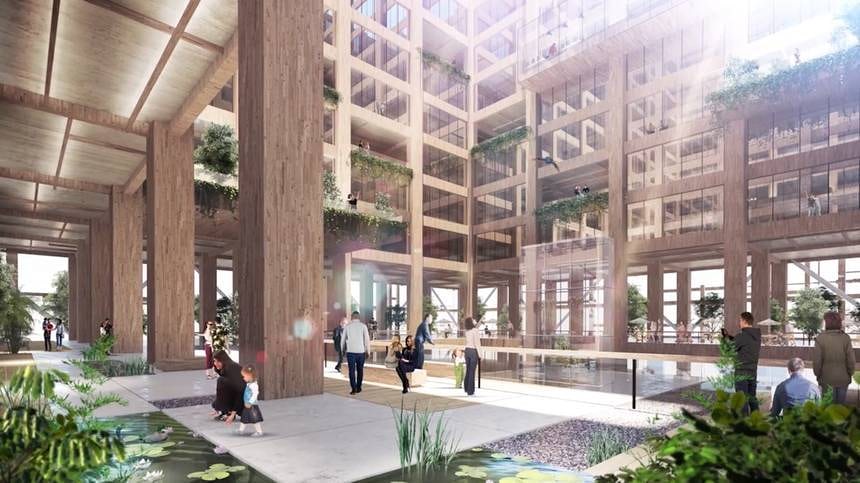
Japanese architects want to turn modern-day cities into wooden forests, quite literally. Japanese firm Sumitomo Forestry unveiled its designs for what would be the tallest wooden building in the world — a 350-meter (1,148-foot) skyscraper, dubbed as the W350 Project.
The building, slated to be completed by 2041, would be made of 90 percent specially processed wood, and 10 percent steel. But it’s not your run-of-the-mill timber that’s going to be built so high into the sky — the building would likely be made of cross-laminated timber, a material made of many sheets of wood glued and compressed together. The final result is a plank that’s more robust than steel. If one of the little piggies built its house from this stuff, even to the heights of the W350 project, then no amount of the wolf’s huffing or puffing could take it down.

Wood is Environmentally Friendly
The production of typical construction materials, like steel and concrete, accounts for 16 percent of global emissions, according to a 2013 study published in the Journal of Sustainable Forestry. By switching to wood, we could reduce the emissions from the construction industry by up to 31 percent, according to a study from the Yale School of Forestry & Environmental Studies.
And because wood is lighter and easier to transport than steel, it requires fewer fossil fuels to transport it, further reducing emissions.
Wood is Cost-Effective
Cross-laminated timber costs about the same as concrete and steel. And again, because it’s lighter, builders can move a lot more of it for the same cost.
While the W350 Project is expected to cost twice as much as an ordinary building, Sumitomo is confident that technological advances between now and 2041, when the building is expected to be complete, will drastically reduce that number.
Wood is Renewable
Compared to steel and concrete, wood is renewable because we can simply grow more timber. “What about deforestation?” you would ask. Those worries are unfounded — less than 1 percent of the world’s forests are harvested annually.
“Harvesting also reduces a forest’s likelihood of suffering a catastrophic wildfires, and improves its ability to withstand it,” wrote the authors in the 2013 study. “Maintaining a mix of forest habitats and tree densities in non-reserved forests would help preserve the varied biodiversity in ecosystems worldwide.”
If managed properly, wood could become an accessible, practical building material for large-scale construction projects. The W350 Project may be the most recent endeavor to bring wood to new heights, but it certainly won’t be the last.